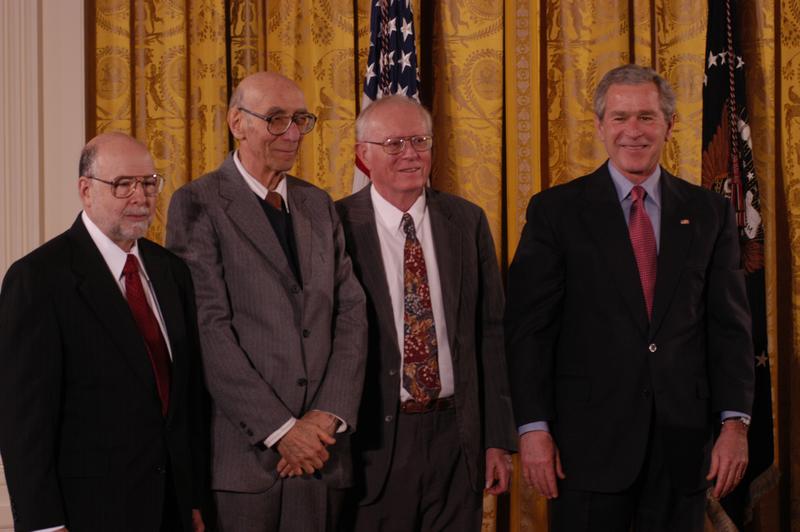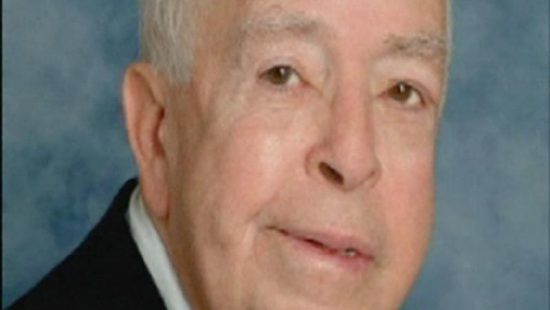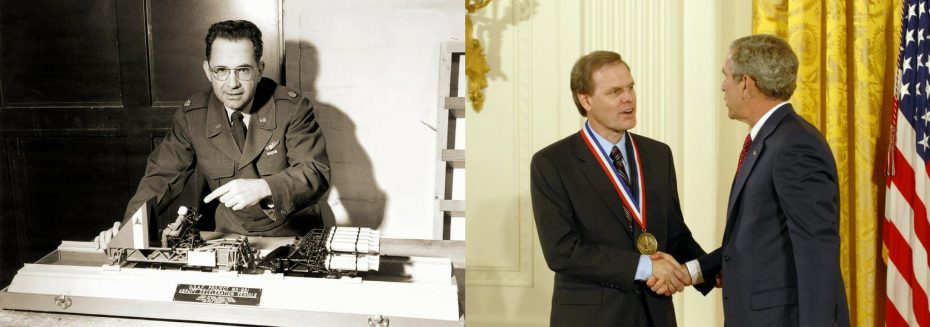Today’s automobiles come in all shapes and sizes, but every engine is equipped with a catalytic converter—a device that transforms automobile exhaust pollutants into less harmful emissions—thanks to the research of engineer Irwin Lachman.
Lachman, who was awarded the National Medal alongside Rodney Bagley and Ronald Lewis, his colleagues at Corning Incorporated, co-invented the cellular ceramic substrate that enabled manufacturers to develop the first commercially mass-produced catalytic converter.
This technology benefitted the environment in two ways. Not only did it reduce polluting emissions from the combustion process by 95 percent, but it also reduced lead pollution, since platinum, the catalyst they used in their invention, required removing lead from gasoline as an additive.
A native of Brooklyn, New York, Lachman received his bachelor’s degree in ceramic engineering from Rutgers University, followed by a M.S. and a Ph.D. in the same field from Ohio State University. After serving in the U.S. Air Force, Lachman worked at Thermo Materials, Inc. and the Sandia National Laboratory before joining Corning Incorporated’s ceramic research team.
In all, Lachman holds 47 U.S. patents, has an array of technical articles and has been awarded a number of high-profile awards, including the International Ceramics Prize, for his breakthrough research.
By Sydni Dunn





